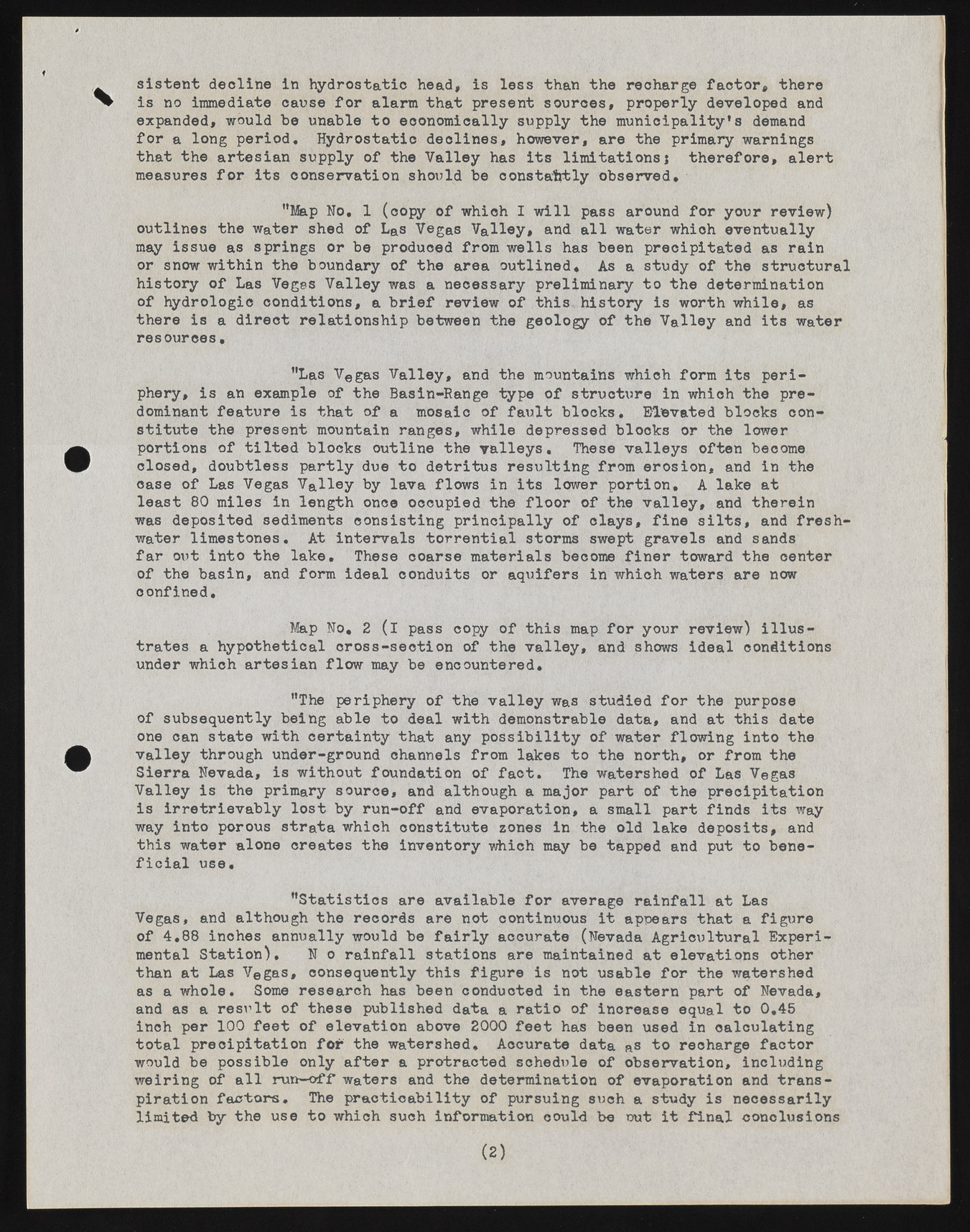Copyright & Fair-use Agreement
UNLV Special Collections provides copies of materials to facilitate private study, scholarship, or research. Material not in the public domain may be used according to fair use of copyrighted materials as defined by copyright law. Please cite us.
Please note that UNLV may not own the copyright to these materials and cannot provide permission to publish or distribute materials when UNLV is not the copyright holder. The user is solely responsible for determining the copyright status of materials and obtaining permission to use material from the copyright holder and for determining whether any permissions relating to any other rights are necessary for the intended use, and for obtaining all required permissions beyond that allowed by fair use.
Read more about our reproduction and use policy.
I agree.Information
Digital ID
Permalink
Details
More Info
Rights
Digital Provenance
Publisher
Transcription
sistent decline in hydrostatic head, is less than the recharge factor, there is no immediate cause for alarm that present sources, properly developed and expanded, would be unable to economically supply the municipality’s demand for a long period. Hydrostatic declines, however, are the primary warnings that the artesian supply of the Valley has its limitations} therefore, alert measures for its conservation should be oonstahtly observed* "Map No. 1 (copy of whioh I will pass around for your review) outlines the water shed of Las Vegas Valley, and all water whioh eventually may issue as springs or be produced from wells has been precipitated as rain or snow within the boundary of the area outlined. As a study of the structural history of Las Veges Valley was a necessary preliminary to the determination of hydrologic conditions, a brief review of thi3 history is worth while, as there is a direct relationship between the geology of the Valley and its water resources. "Las Vegas Valley, and the mountains which form its periphery, is an example of the Basin-Range type of structure in whioh the predominant feature is that of a mosaic of fault blocks. Elevated blocks constitute the present mountain ranges, while depressed blooks or the lower portions of tilted blocks outline the valleys. These valleys often beoome closed, doubtless partly due to detritus resulting from erosion, and in the case of Las Vegas V alley by lava flows in its lower portion. A lake at least 80 miles in length once occupied the floor of the valley, and therein was deposited sediments consisting principally of clays, fine silts, and freshwater limestones. At intervals torrential storms swept gravels and sands far out into the lake. These coarse materials become finer toward the center of the basin, and form ideal conduits or aquifers in which waters are now confined. Map No, 2 (I pass copy of this map for your review) illustrates a hypothetical cross-section of the valley, and shows ideal conditions under whioh artesian flow may be encountered. "The periphery of the valley was studied for the purpose of subsequently being able to deal with demonstrable data, and at this date one can state with certainty that any possibility of water flowing into the valley through under-ground channels from lakes to the north, or from the Sierra Nevada, is without foundation of fact. The watershed of Las Vegas Valley is the primary source, and although a major part of the precipitation is irretrievably lost by run-off and evaporation, a small part finds its way way into porous strata which constitute zones in the old lake deposits, and this water alone creates the inventory which may be tapped and put to beneficial use. "Statistics are available for average rainfall at Las Vegas, and although the records are not continuous it appears that a figure of 4,88 inohes annually would be fairly accurate (Nevada Agricultural Experimental Station). N o rainfall stations are maintained at elevations other than at Las Vegas, consequently this figure is not usable for the watershed as a whole. Some research has been conducted in the eastern part of Nevada, and as a result of these published data a ratio of increase equal to 0.45 inch per 100 feet of elevation above 2000 feet has been used in calculating total precipitation for the watershed. Accurate data as to recharge factor would be possible only after a protracted schedule of observation, including weiring of all run-off waters and the determination of evaporation and transpiration factors. The practicability of pursuing suoh a study is necessarily limited by the use to which such information could be out it final conclusions (2)

